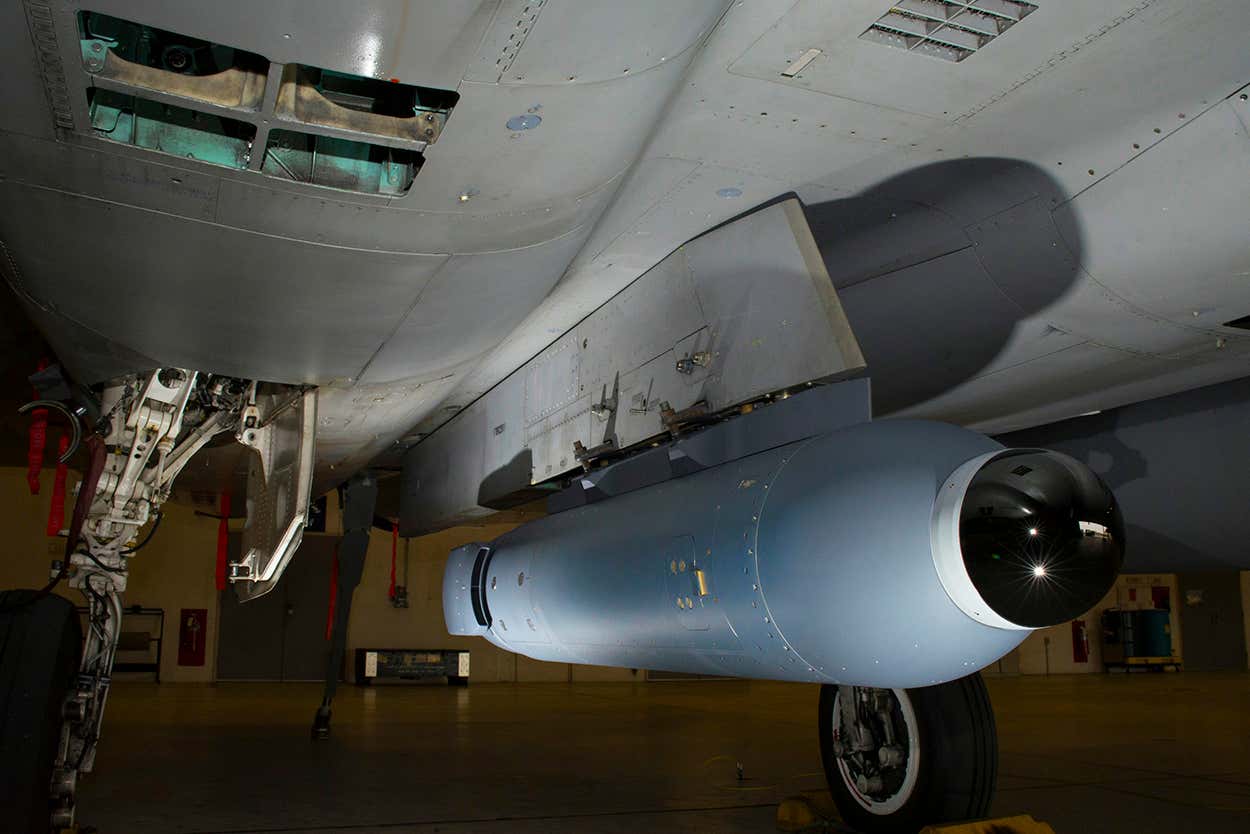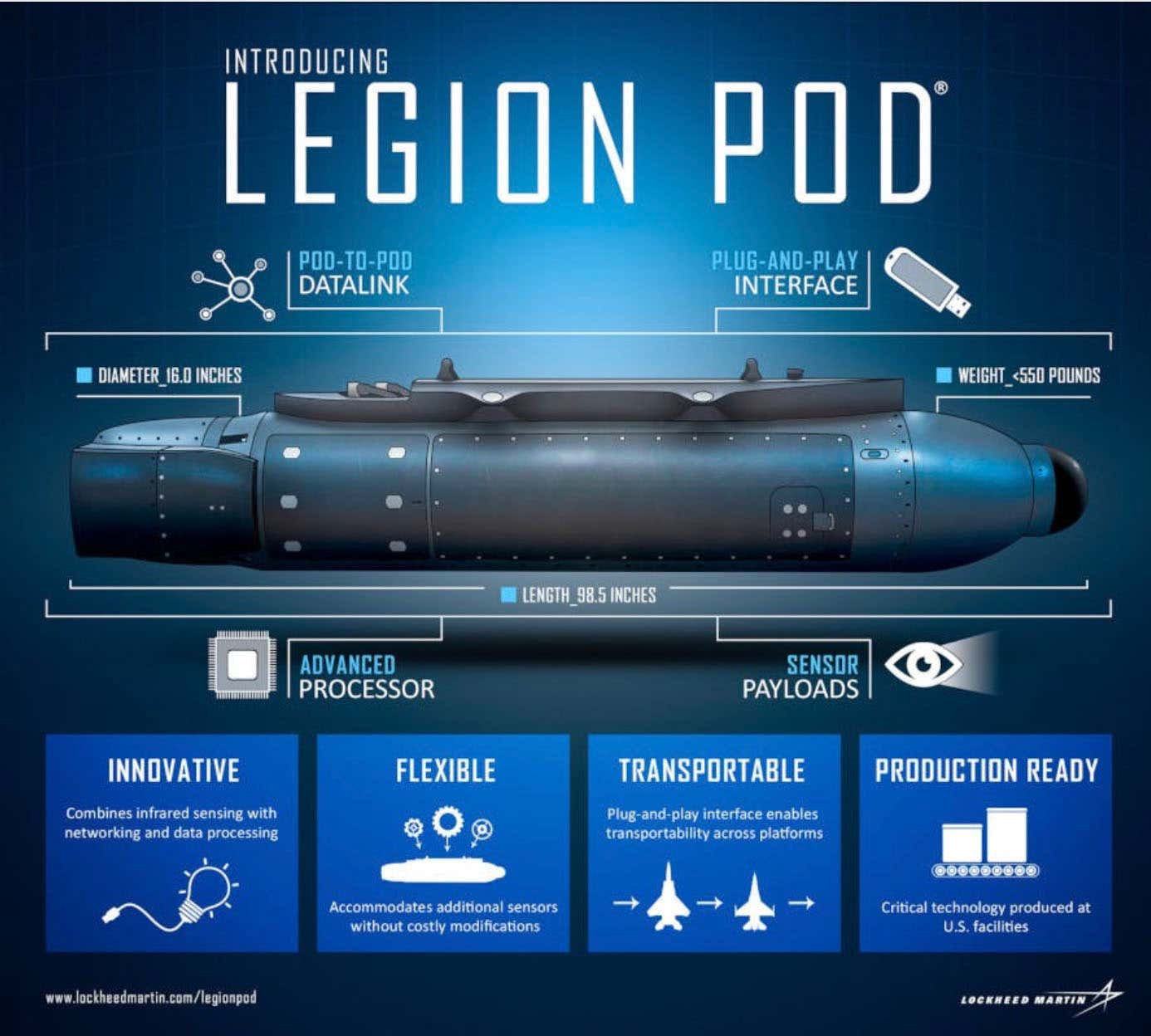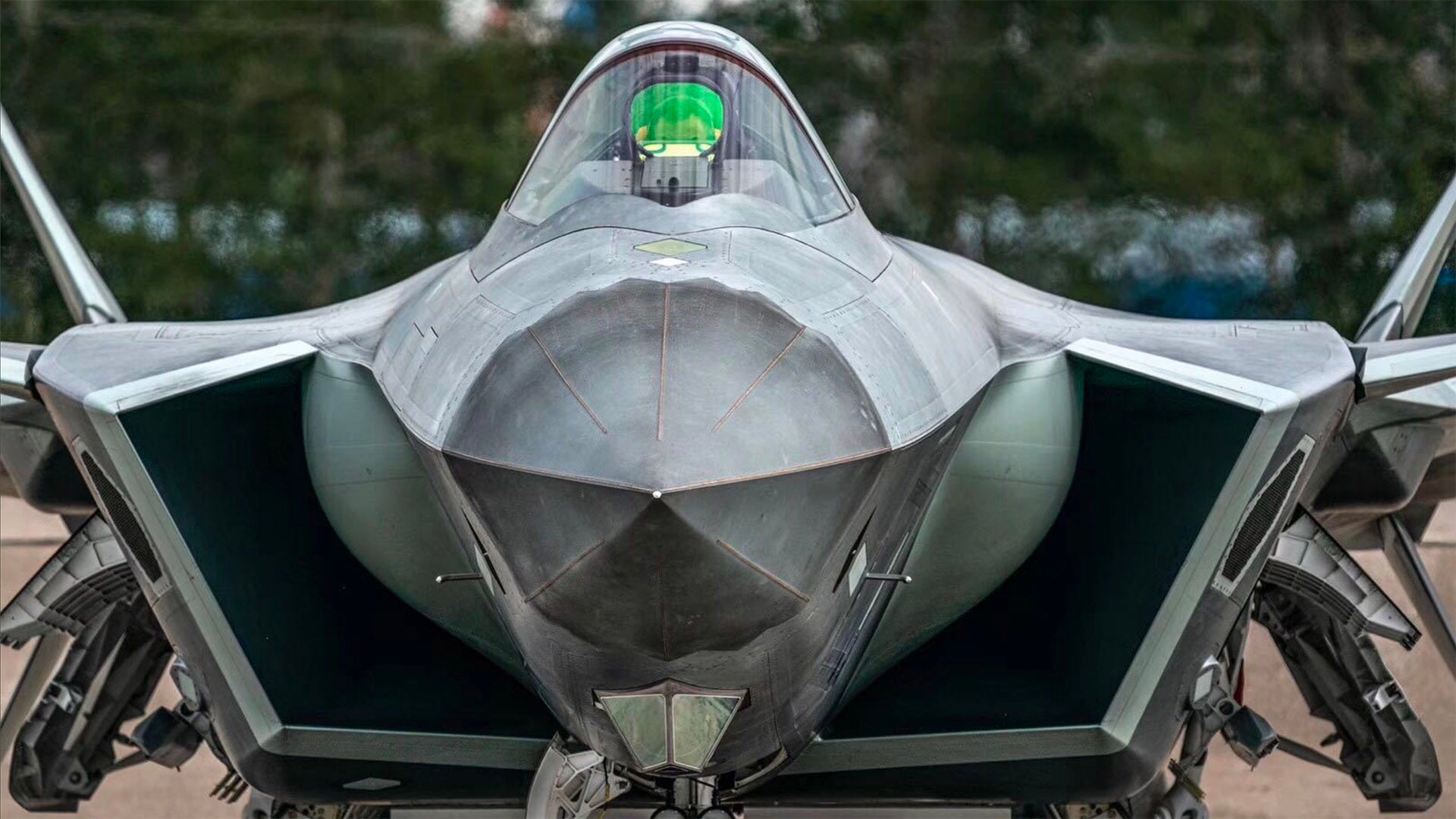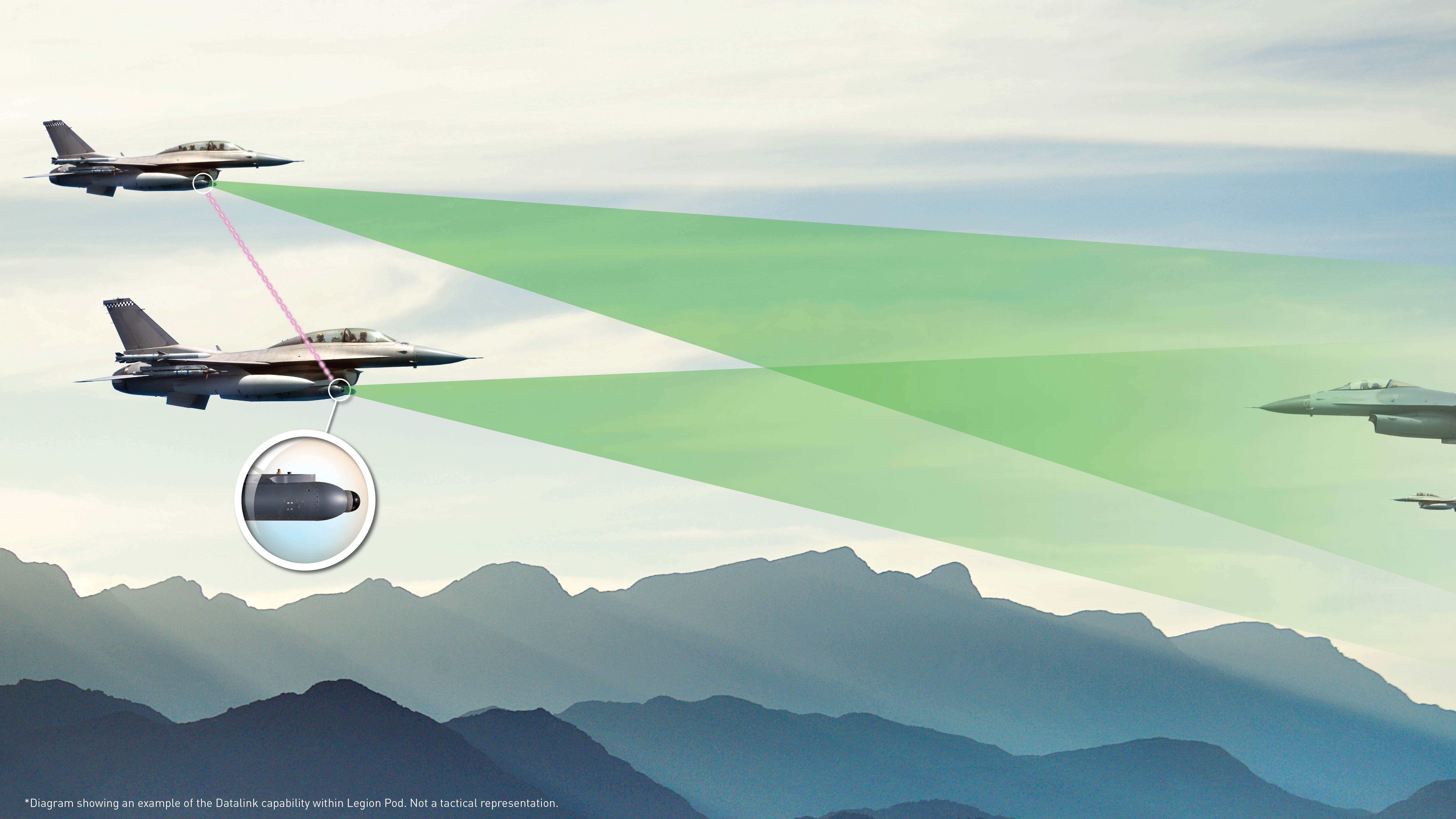U.S. Air Force F-15C Eagle fighters based at Kadena Air Base in Okinawa, Japan, have been spotted carrying the Lockheed Martin Legion Pod, apparently for the first time. This system has an infrared search and track sensor, or IRST, which provides the pilot with a valuable new way of detecting and tracking other aircraft at long ranges, including ones that employ stealth technology to hide from radar. While the Legion Pod has been seen on test Eagles for some time now, this seems to be the first evidence that frontline F-15C/Ds overseas are now flying with the sensor.
A series of photos taken today and posted to Twitter by aviation photographer @SuneKuma01 includes two views of the same F-15C, serial number 81-0050, assigned to Kadena’s 67th Fighter Squadron, with a Legion Pod under the fuselage. The 67th FS is one of two F-15C/D squadrons at Kadena, both part of the 18th Wing. The only other overseas U.S. Air Force F-15C/D unit is based in England.

The Air Force had previously said the pod was likely to attain initial operational capability in 2020, so it shouldn’t be a huge surprise that the store has now appeared on a frontline Pacific Air Forces (PACAF) F-15 at Kadena. Furthermore, the Japanese facility’s strategic location in regard to China, North Korea, and Russia means it was likely to be among the first in line to get the Legion Pod.

Despite their age, the Air Force’s fleet of roughly 220 F-15C/Ds are still formidable air-superiority jets, with a combat record unrivaled among other in-service fighters. Although a replacement is starting to arrive in the shape of the F-15EX, the original F-15C/Ds have been upgraded repeatedly to keep them combat-relevant.
As well as AN/APG-63(V)3 active electronically scanned array radars and new cockpit displays, the jets have received the Lockheed Martin AN/AAQ-33 Sniper Advanced Targeting Pod (ATP), an example of which can be seen on another jet that @SuneKuma01 photographed today. While the Sniper pod is traditionally used for air-to-ground precision strike and reconnaissance functions, the F-15C/D community adapted it for long-range visual identification purposes. In that role, it can ID aircraft day or night dozens of miles away and can be automatically slewed to radar target to do so. Still, it is not an IRST and has very limited capability in replicating an IRST’s core functionality, especially the latest generation of these systems that are incredibly capable.
As for the Legion Pod with its IRST payload, you can read more about the capabilities that it offers here. Suffice it to say that it’s a tool that allows the pilot to rapidly spot and then track multiple targets well beyond visual range. The pod can also provide targeting information so the pilot can engage an enemy passively, without emitting any electromagnetic energy which can allow the hunted to detect the hunter, as is the case when using radar in many cases. The targeting data can also be combined with information from other sensors, and especially other aircraft carrying IRSTs, for a more accurate ‘fix.’

It’s easy to see how these kinds of advantages could come into play in the Asia Pacific theater, especially during a confrontation with China. In such circumstances, there would likely be intense electronic jamming, potentially degrading the Eagle’s AN/APG-63 radar. There would also be a host of potential threat sensors likely looking out for an F-15’s radar emissions. Airborne early warning and control aircraft that support F-15 operations so heavily would also be top targets. Add enemy stealth fighters into the mix, and the need for additional means to acquire and engage enemy aerial threats passively becomes even more important.
We must stress that a modern IRST’s ability to find targets that leverage radio-frequency low-observability (radar stealth) as a primary design driver, such as stealthy fighters, drones, bombers, and especially cruise missiles, would put this system in extremely high demand for Kadena’s Eagles. The island airbase itself would be a target of many of these capabilities during a conflict with China. The threat posed by low-flying stealthy cruise missiles alone has the USAF spooked, and its Eagles are now training against low observable targets in anticipation of confronting such a threat during a time of war.

Lockheed Martin leveraged technology for the IRST21 sensor from the earlier AN/AAS-42 IRST system that was found in the F-14D Tomcat. Before the Legion Pod, the company also furnished the Tiger Eyes sensor system for certain advanced export derivatives of the F-15E Strike Eagle. The background to the current pod is something you can read more about here.
After being tested aboard an F-16, the Legion Pod began flying on an F-15C in 2016 and a year later was selected by the Air Force in favor of the rival OpenPod from Northrop Grumman. The Legion pod has since begun testing on other platforms, too, including General Atomics’ stealthy Avenger drone.

At the same time, the IRST21 is being adopted by the U.S. Navy, with Block III F/A-18E/F Super Hornet receiving the same sensor in a modified centerline drop tank. An earlier version of the Navy’s own similar IRST system has already been deployed aboard carriers and flown on missions over the Middle East. The IRST21 is also incorporated in the Air Force’s Talon HATE communications node pod and will likely be a major sensor for various drone programs that are been spun up now.
The Legion Pod is an open-architecture design with extra space to include additional capabilities, which means that other sensors and payloads can be added in the future. With this in mind, Kadena Eagles could eventually use the same pods to carry other capabilities, like electronic warfare or communications equipment, while also retaining the IRST in some cases. Work has already begun to add a data link to the pod, allowing two IRST-equipped F-15Cs to determine the range of a given target “near instantaneously” via triangulation.

The potential for the Legion Pod to share data between jets for more accurate firing solutions and enhanced situational awareness speaks to another advantage of the store. Ultimately, it will serve to boost connectivity between F-15s and also help share information from multiple sources as a significant battlefield force multiplier.
All in all, the Kadena Eagle community getting their hands on the long-awaited IRST-equipped Legion Pods is significant. The base’s location also provides an ideal environment to test the pod over land and sea, and it seems certain that we will be seeing a lot more of these new stores in the future, both on Kadena Eagles at home in Okinawa, and Eagles deployed to different theaters around the world, as well as right here in the United States for homeland air sovereignty missions.
Contact the author: thomas@thedrive.com
